Out early for a drive through the Chiriqui highlands to Cerro Punta. A short distance as the toucan flies, but we mortals had to drive around the volcano.
On the way, we stopped at a honey farm run by a lady from Scotland. She and her workers specialize in honey from Africanized bees (killer bees). The result is an amazing flavor…actually 22 amazing flavors!
Once on the other side of Volcan Baru, we met a farmer named Sanfrancisco. He and his sons run an extensive farming operation which sells mostly vegetables to wholesalers for distribution all over Panama and beyond. Our group of four (3 avid gardeners) peppered Sanfrancisco with lots of questions prompting a quick tour of the farm. Upon returning, his daughter had prepared carrot cake and a cold blackberry drink for us. Yum.
Having enjoyed our dessert first, we motored back to the town of Volcan for a gourmet lunch served by the owner, a lady from Australia. Imagine driving through the highlands of Panama and landing at a tiny restaurant which serves you cold, fresh raspberry juice followed by trout fillet with poppy seeds over a thin bed of pickle sauce!
After another lovely drive through the countryside and a short rest at the hotel, it was time to eat again. This time our meal was in the hotel dining room: pumpkin soup, fresh red snapper with yuca and for dessert, a choice of flan or sumptuous cheese cake. Sweet dreams, indeed.
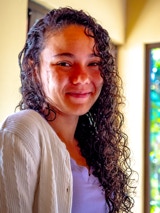
This young lady, Emily, actually conducted the honey tasting.
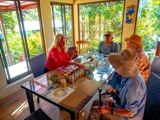
The owner of the honey farm and an adjoining butterfly pavilion prepares the table for Emily’s presentation. With us here are Balu and Shirley.

This photo was shared by someone on TripAdvisor and shows the fine points of identifying relative qualities when tasting honey. Later, you will see a photo I took regarding the qualities to compare when tasting coffee.
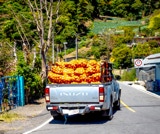

It was definitely time to harvest onions. We saw them being picked, transported and stored all over this region.
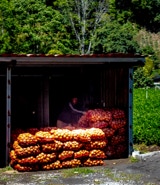
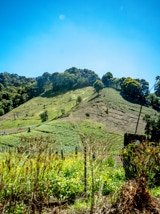
It must be hard to prepare a field for planting because the jungle-like growth is always claiming new space and trying to get the advantage of sunlight. Nonetheless, the farmers of Panama make use of every inch they have plowed.
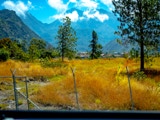
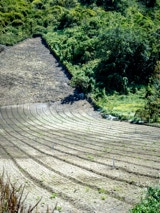
This is the end of the dry season and the beginning of six months of rain.
Look at the size of those carrots and cabbages!

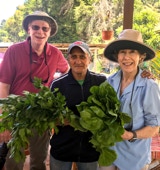


Acres (hectares) of carrots and potatoes which will end up in a warehouse like the one below.

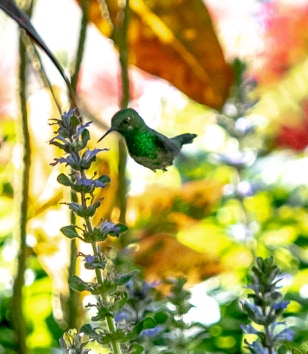



Sanfrancisco also had some VERY happy hummingbirds.
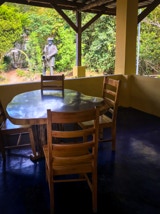
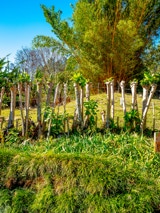
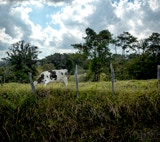
Isn’t this a charming open air venue for our gourmet meal? Note the table made from a cross section of a huge tree and the sculpture out in the yard.
Top - living fences. When a branch grows to the proper height, it is cut off and poked back into the ground where it sprouts new fence posts.

A typical school building in Panama. All kids wear uniforms to public schools. All Panamanians pay 4.2% of their earnings as a school tax, whether they have children in school or not.